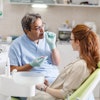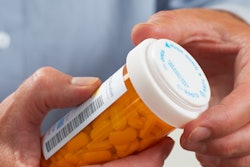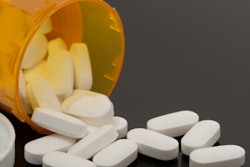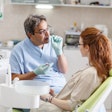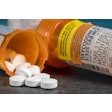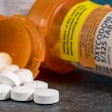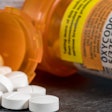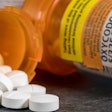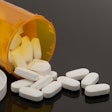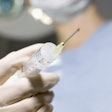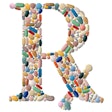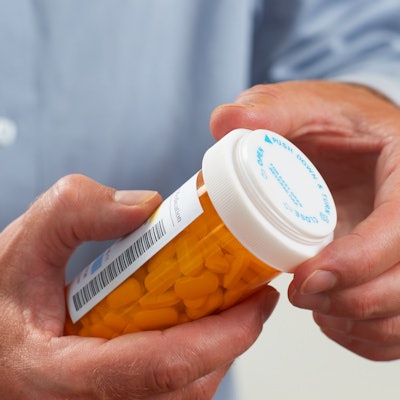
Dentists may be writing fewer opioid prescriptions for Medicaid patients, but recipients are still likely to get the drugs if emergency room practitioners or others treat their dental problems, according to a study in October issue of thethe Journal of the American Dental Association.
Medicaid patients who receive oral healthcare at emergency departments are about seven times more likely to be prescribed opioids to manage their dental pain. Those with dental conditions were approximately four times as likely to receive opioids from nurse practitioners than dentists, the researchers reported.
"Overall, dentists provided substantially fewer opioid prescriptions than were their medical colleagues for pain treatment after a dental diagnosis in the Medicaid population we examined," wrote the authors, led by Chandrashekar Janakiram, MDS, PhD, a postdoctoral fellow at the National Library of Medicine and National Institute of Dental and Craniofacial Research in Bethesda, MD (JADA, October 2019, Vol. 150:10, pp. e135-e144).
The increasing rates of opioid use, abuse, and overdose deaths during the past 10 years have resulted in a public health crisis in the U.S. Dentists prescribe an estimated 12% of all annual opioid prescriptions, and about 1,500 deaths each year are likely attributable to opioids that were first prescribed to patients by dentists.
Since information about the opioid prescribing practices of emergency department healthcare practitioners for dental pain is sparse, the researchers aimed to investigate who received the medication and whether clinician type influenced the outcome.
They compared prescribing practices by reviewing Medicaid claims dated from January 2013 through September 2015 that were filed in 13 states in the U.S.
Of the approximately 1 million Medicaid patients who were diagnosed with dental conditions, nearly 20% filled opioid prescriptions within 14 days of diagnosis. Some practitioners wrote opioid prescriptions more often than others, study findings showed.
| Providers who prescribed opioids to Medicaid patients with dental diagnoses | ||||||
| Emergency department | Dentist | Medical assistant | Nurse practitioner | Other | Unknown | |
| Patients with dental diagnosis (percentage of total) | 239,366 (23.7%) |
215,698 (21.4%) |
195,105 (19.3%) |
43,267 (4.3%) |
200,820 (19.9%) |
114,144 (11.3%) |
| Patients with opioid prescriptions (percentage of total) | 78,001 (39.1%) |
12,381 (6.2%) |
40,341 (20.2%) |
9,658 (4.8%) |
25,565 (12.8%) |
33,700 (16.9%) |
The study results are considered strong due to the large number of claims reviewed and the fact that the study looked at a population that often underuses the oral healthcare system, according to the researchers.
Nevertheless, the study had some limitations. The findings cannot be generalized for the U.S. population because the study was limited to the Medicaid population. Additionally, the researchers were unable to quantify the number of opioids prescribed for each person because the database used does not contain patient-level pharmacy drug dosage data, they noted.
Despite the study limitations, dentists are urged to "continue with conservative prescribing practices," the authors wrote.


